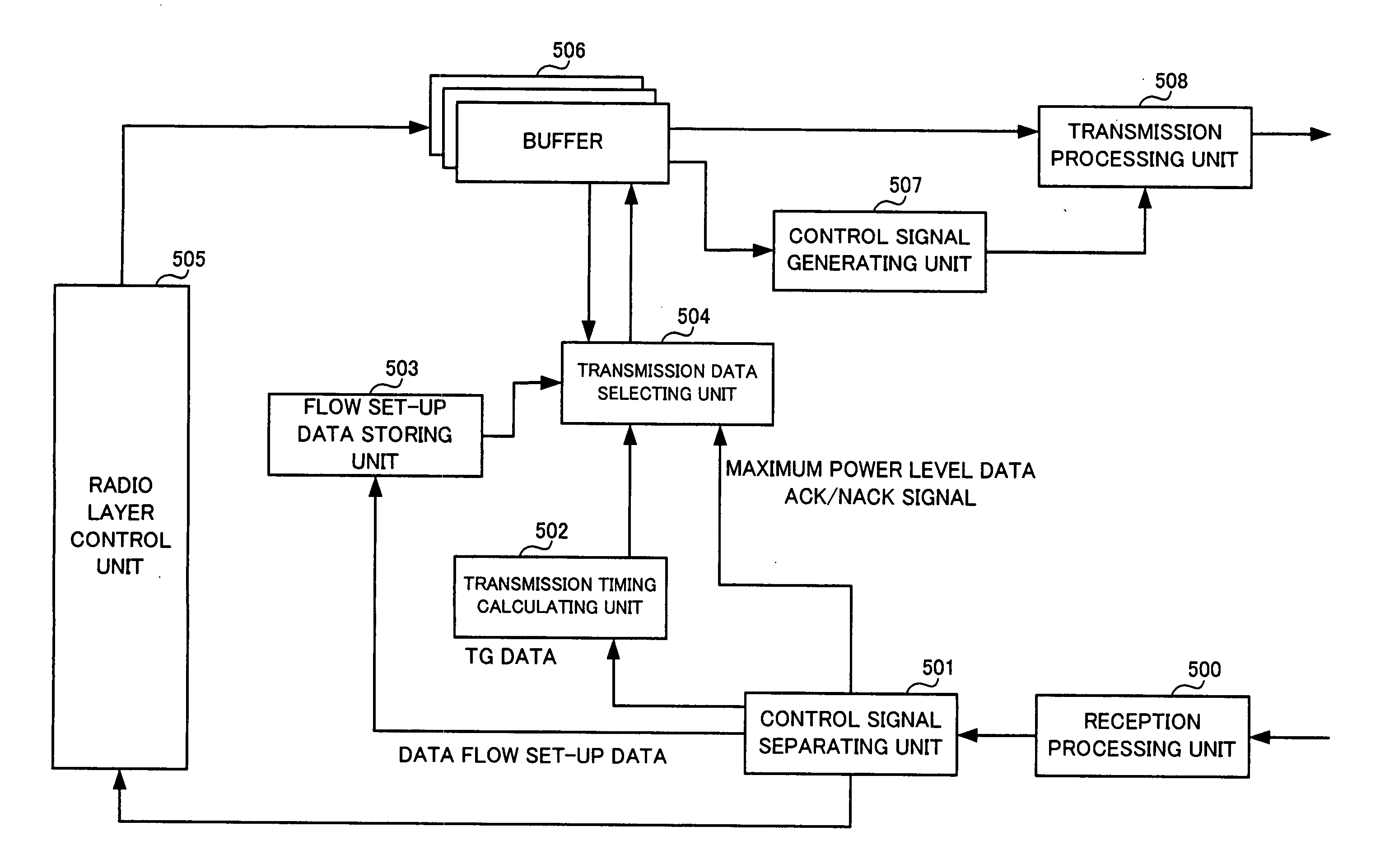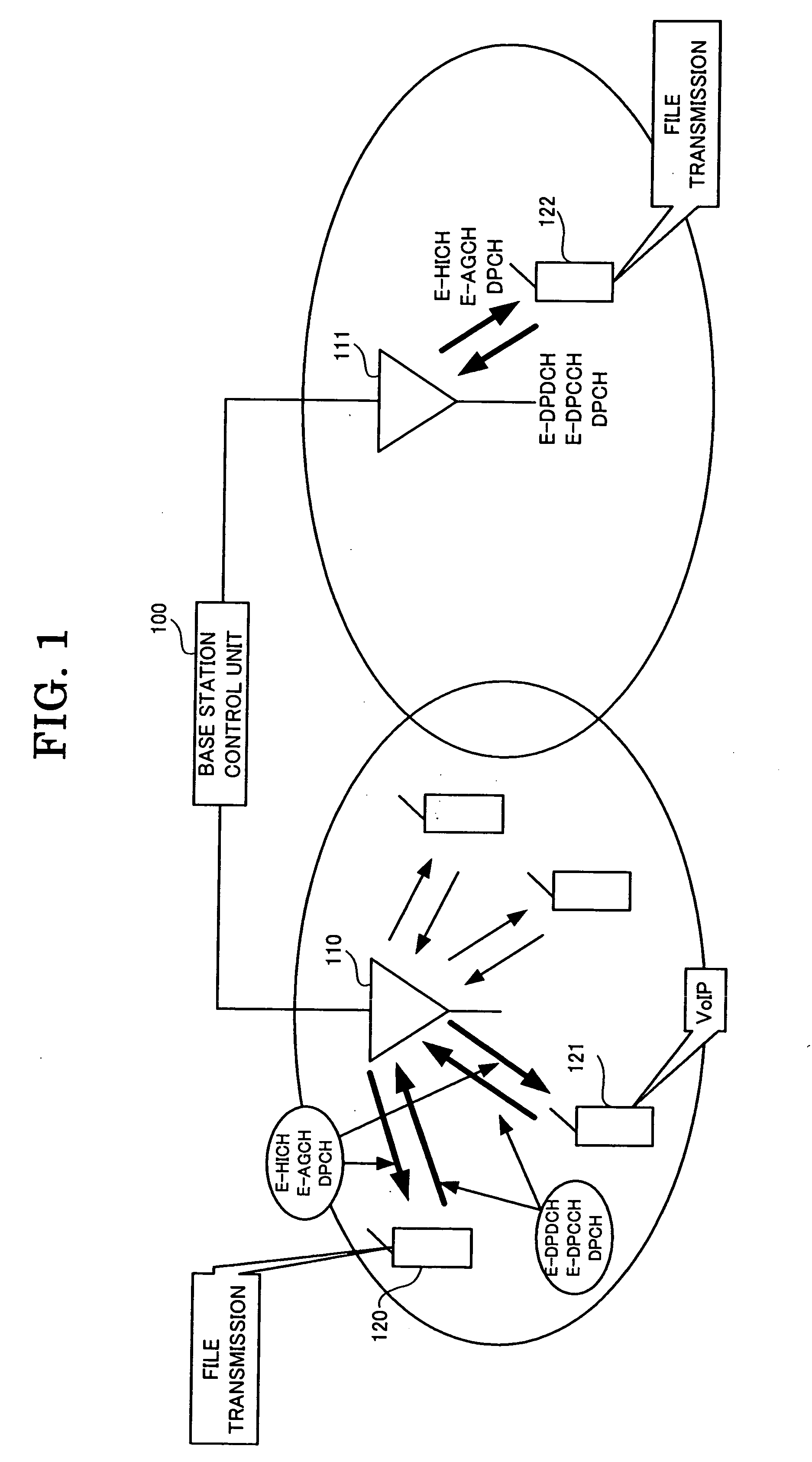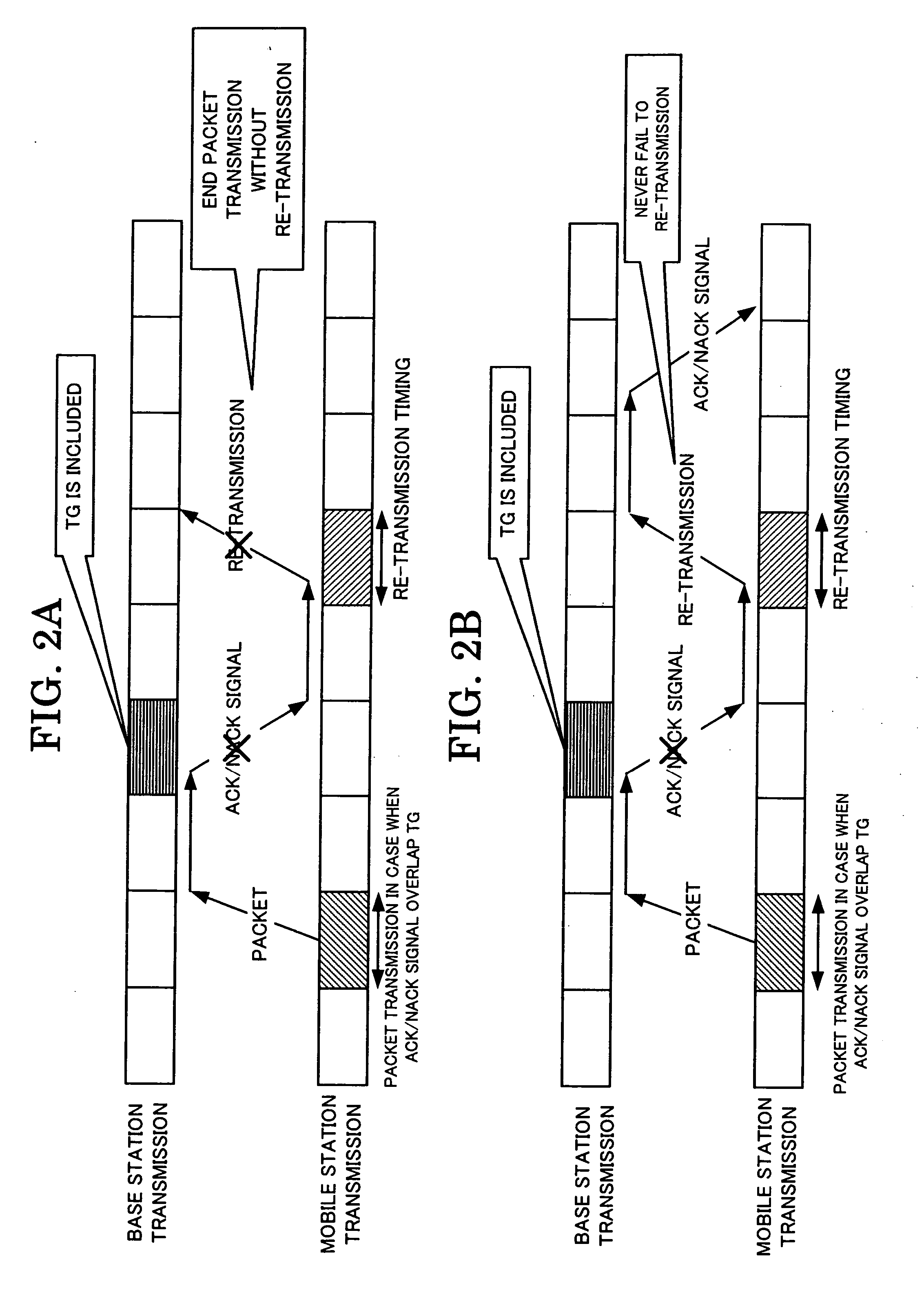Communication control method, wireless communication system, mobile station, base station and base station control unit
a communication control and wireless communication technology, applied in the field of communication control systems, can solve the problems of long control delay, large error factor in the rlc control, and long packet transmission delay, so as to reduce the error factor of such packets, reduce the delay swaying, and reduce the transmission delay
- Summary
- Abstract
- Description
- Claims
- Application Information
AI Technical Summary
Benefits of technology
Problems solved by technology
Method used
Image
Examples
first embodiment
[0124]FIG. 1 shows a system arrangement to be used in a first embodiment of the present invention.
[0125] Mobile stations 120 to 122 set up the following radio channel with base stations 110 and 111 for the EUDCH. The mobile station 121 transmits the VoIP of severe delay swaying requirement, and the mobile stations 120 and 122 execute a file transfer of severe error factor requirement.
[0126] E-DPDCM (UL): Channel for transmitting data of EUDCH
[0127] E-DPCCH (UL): Channel for transmitting control signal of EUDCH
[0128] E-HICH (DL): Channel for transmitting ACK / NACK signal of HARQ
[0129] E-ACCH (DL): Channel for transmitting scheduling signal
[0130] DPCH (DL / UL): Channel for transmitting other control signals
[0131] It is assumed that the base station is connected to a plurality of mobile stations other than the mobile stations 120 and 121 and that the base station 110 is connected to a larger number of mobile stations as compared to the base station 111. The base stations 110 and 1...
second embodiment
[0173] Now, a second embodiment of the present invention will be described. The second embodiment is configured, other than the scheduling to be performed by the base station in the first embodiment, the base station control unit secures resources in priority so as to provide the setting for transmission rate guarantee data flows. Such data flows are referred to as the transmission rate guarantee data herein. The base station control unit sets data flows of severe delay swaying requirement to be transmission rate guarantee data. When the mobile station transmits such data flows, it is notified in advance from the base station control unit of the fact that the data flow has been set up to be transmission rate guarantee data. It is prescribed that the mobile station can transmit such data flows at any time at the predetermined transmission rate notified from the base station control unit irrespective of the power level instructed by the base station.
[0174] In the second embodiment, u...
third embodiment
[0179] Now, a third embodiment of the present invention will be described. In the third embodiment, in case of overlapping of the ACK / NACK signal transmission timing over the TG, the mobile station transmits data flows as in the normal manner, and performs re-transmission at the predetermined timing. This means that the mobile station always operates like the case in the “repeat mode” of the first embodiment. The base station control unit in the third embodiment is set apart from that of the first embodiment in that, in case of setting up the mobile station in the CM for transmitting of severe delay swaying requirement, the mobile station is instructed to re-setup the number of the maximum re-transmission times and the power level offset as follows:
[0180] Maximum number of re-transmission times: 0
[0181] Power level offset: dP_QoS(New)=dP_QoS(OLD)×dP_CM.
[0182] The re-setup mobile station thus performs transmission at the per bit power level always set to higher than before the CM ...
PUM
 Login to View More
Login to View More Abstract
Description
Claims
Application Information
 Login to View More
Login to View More - R&D
- Intellectual Property
- Life Sciences
- Materials
- Tech Scout
- Unparalleled Data Quality
- Higher Quality Content
- 60% Fewer Hallucinations
Browse by: Latest US Patents, China's latest patents, Technical Efficacy Thesaurus, Application Domain, Technology Topic, Popular Technical Reports.
© 2025 PatSnap. All rights reserved.Legal|Privacy policy|Modern Slavery Act Transparency Statement|Sitemap|About US| Contact US: help@patsnap.com



